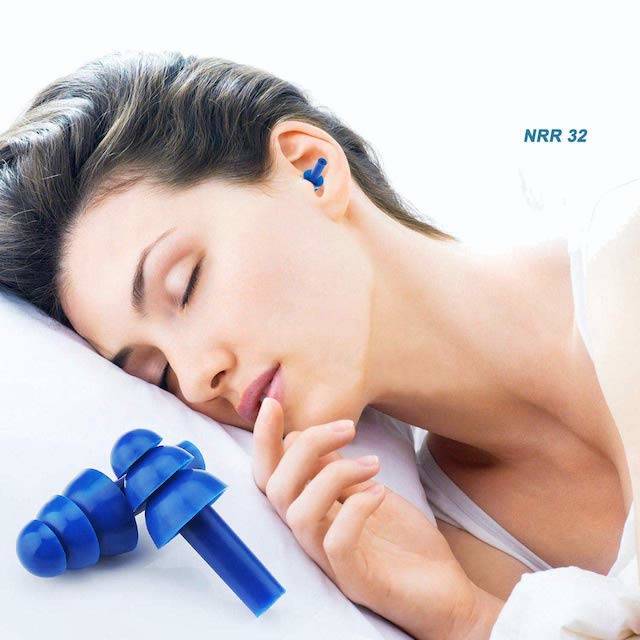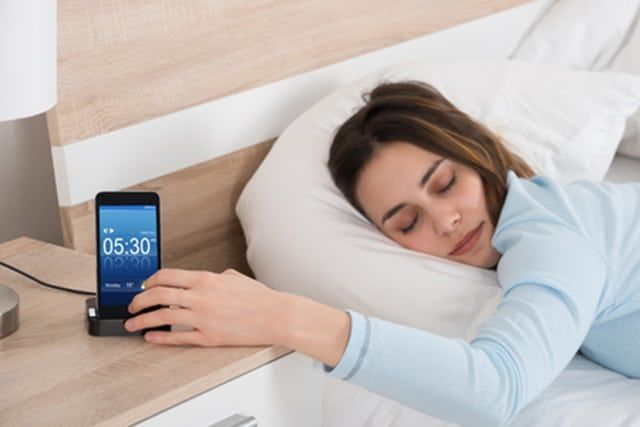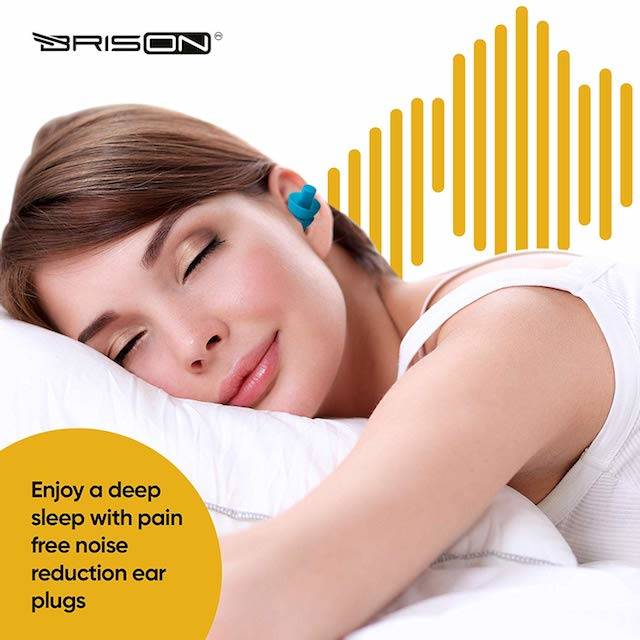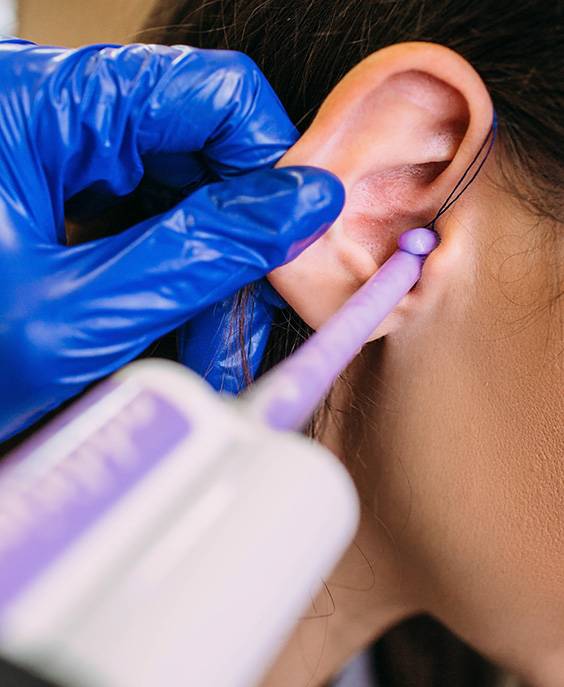Earplugs are a wonderful invention if you can choose the appropriate one and use them correctly. They’re basically one of the safest ways to block out noise while performing certain activities that require peace and quiet. They also involve a minimal amount of risk. Made from foam, wax or silicone, earplugs are inserted into one’s ear canal and can block a certain amount of noise, which varies from one product to another.
Should All Noise Be Blocked?
The answer is obviously no. Even when you’re sleeping, you need to be aware of the environment around you in case of imminent danger. This could mean anything from a spontaneous fire inside the house to your children crying or screaming. There could be a break-in, a home security alarm, a fire alarm, or other types of noises that you want to be able to hear even if you’re wearing earplugs.

What Is NRR?

NRR is always measured in decibels, which is the unit that measures noise. Manufacturers that make earplugs will have different types of products tested inside a laboratory in order to determine what is the amount of noise that a certain product can block. NRR first started as a concept that was meant to protecting the hearing of workers who operate in really loud environments. As you know, being exposed to high levels of noise over extended periods of time can be damaging to one’s hearing, which is why a certain degree of protection is crucial.

NRR is actually a more complex measuring system than what you’d expect it to be and it involves knowing a little bit of math in order to determine just how many decibels are associated with a specific noise reduction rating level. Translation: if you find earplugs with an NNR or 30, that doesn’t necessarily mean they can block out 30 decibels of sound.
Let’s see a more specific example. If you’re working in constructions and you’re constantly exposed to 100 decibels of noise every day, using a set of earplugs with an NNR of 30 doesn’t mean that you’ll be lowering the noise you hear to a 70 dB level. Instead, you’d be exposed to 88.5 decibels. What is the mathematical formula used to determine those 88.5 decibels? Take the noise reduction rating of your earplugs, subtract the number seven, and divide your result in half. Now subtract this result from the original noise level that you were exposed to. The formula would be:
100 dB – [(30 NNR – 7)/2] = 88.5 dB
Earplugs & Alarms
One of the main risks that people who use earplugs expose themselves to is not being able to hear the alarm clock in the morning. In fact, it’s probably the first fear that came to mind when you first thought about buying and using earplugs yourself. In most cases, you should be able to hear your alarm clock even if you like sleeping with earplugs. However, it’s also a matter of what types of earplugs you’re wearing and what your alarm sound is. Of course, it also depends on how much sleep you got, because if you only slept for a couple of hours, you’re probably in a deep sleep stage by the time the alarm goes off which decreases the odds of your waking up. If you use a regular alarm clock, the alarm itself should be loud enough to wake you up. However, most people these days use alarms on their smartphones, and if you’re not choosing a noticeable sound or if your volume is down, you risk sleeping right through all the ringing.

Make sure that you test your alarm setup before actually going to bed. Try to take a nap on a weekend afternoon and have your alarm clock ring within the hour. Put your earplugs in and go to sleep. If you can’t wake up within the first seconds of your alarm ringing, you might want to switch it with another sound.
The material that your earplugs are made from will also determine whether or not you can hear the alarm clock. Another important factor that you want to look into is the NRR of those earplugs, which should be mentioned on the packaging of each brand of plugs that you buy.
Multimedia Earplugs
Fear not, as there is a tech approach to this whole “what if I don’t hear my alarm” problem. You can purchase a set of earplugs that are basically a combination of plugs and wireless in-ear headphones. That way, when the alarm goes off, you can actually hear the sound inside your earplugs. Technically, these are called smart earplugs, and there are quite a few manufacturers who have extended their business and make such products, such as Hush.
These are headphones that go inside your ear canal and have two important properties that will be of interest to you. First of all, they can be paired with your smartphone or some other mobile device in order for you to be able to play music, listen to podcasts, audiobooks, watch videos, and basically use them as you would any other set of wireless headphones with a Bluetooth connection.

Important Earplug Risks

It’s important to be aware of what extensive or incorrect use of earplugs brings to the table so that you’ll take the proper sleep hygiene measures that come along with inserting a foreign object in your ear canal. First of all, you could end up with a pretty nasty ear canal irritation if you’re using earplugs that are too large to fit, or if you keep pushing them or trying to shove them as far as they can go. There is a right and a wrong way to insert earplugs in your ear canal. Always twist the earplugs as you further push them inside your ears, and never try to insert them too far up, as you risk damaging your eardrums.

Depending on what type of earplugs you buy, you will either have to clean them on a regular basis or replace them altogether. For instance, foam earplugs are soft and easy to mold to the shape of your ear canal. While they’re extremely comfortable and typically don’t cause any irritations, the foam structure also make it very easy for bacteria deposits to linger onto the plugs for too long. Most foam earplugs are replaceable and you’ll often find packs that contain up to 100 pairs of foam earplugs. On the other hand, if you opt for silicone earplugs, you will have a product that typically easy to clean (which you should do every day, if possible). Most types of earplugs can be molded to fit inside your ear or are available in different sizes. However, there are also custom-made earplugs that are designed especially for the size of your ear.
You might want to read: Best Earplugs for a Quieter Night’s Sleep
Conclusion
For the most part, you should be able to use regular earplugs when you’re sleeping without the risk of not hearing your daily alarm. However, there are a few things that you can do in order to make sure that you don’t miss the alarm. Make sure to opt for a sound that’s less soothing than what you’d want to hear in the morning. We’d all love to wake up to a smooth and peaceful song, but that doesn’t always get you out of bed, especially when you have something inserted in your ear canal that’s meant to block out the noise. So, make sure to choose a loud alarm that will be sure to do its job, and get you up and ready for the day ahead.